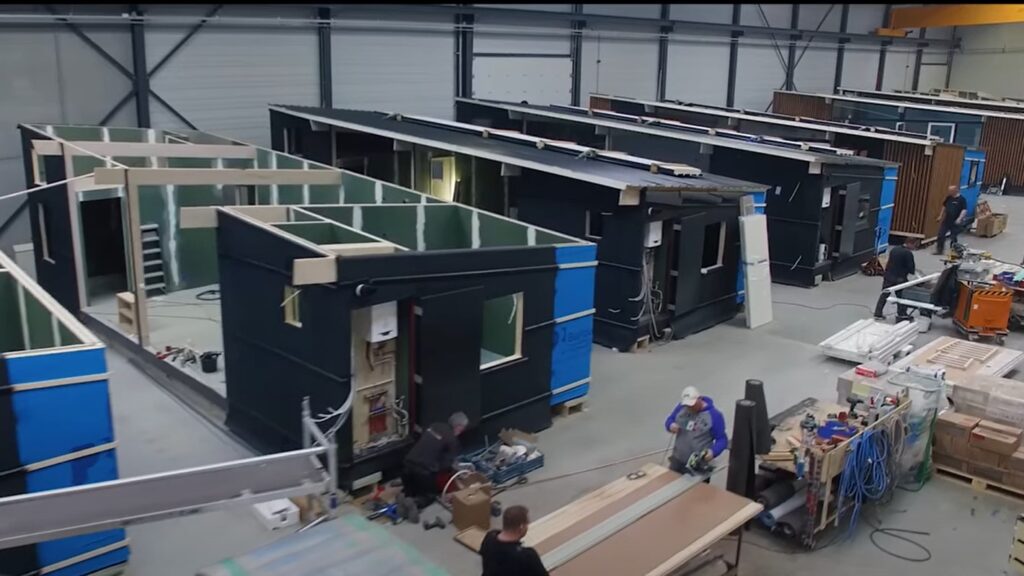Pilot for KOMO on certification of complete prefabricated home
March 21, 2024The Netherlands faces a huge building task. The prognosis is that a total of 981,000 homes are needed in the years running up to and including 2023. Prefabricated building is one of the solutions for this. Martin van Rijn, chairman of the organisaton promoting the interests of practically every housing association in the Netherlands, Aedes, called for a national admission test for conceptual building similar to the vehicle testing body, RDW (independent administrative body of the Dutch government tasked with licensing, approval, supervision, and providing information regarding vehicles). In his view, this could help accelerate the building of Dutch housing. The pilot ‘Type Approval Modular Homes’ was launched to achieve this.
When a certain type of car is approved by the RDW, the approval applies to all copies of that model and it is then permitted on the roads throughout the country. See here the similarity with an independently approved prefabricated home. This led to the initiation of the ‘Type Approval Modular Homes’ pilot. The intended purpose of this pilot is to KOMO certify a complete prefabricated home according to new Assessment Guideline 0903-1 ‘Modular Building Systems – Units for Permanent Use’. Those involved in the project include: the Ministry of the Interior and Kingdom Relations, certification bodies SKH and SKG-IKOB the Expertise centre Flexwonen (project leader in this), KiK-quality assurers PlanGarant en gBou. and seven builders/manufacturers of modular homes who will be acquiring certification.

Certification all the way to the lorry
Gert-Jan Roelofs is project manager of existing Assessment Guideline 0903-1 at SKH. This Assessment Guideline deals with requirements for modular prefabricated building systems, prefabricated modules made in the factory. He explains: “Builders/manufacturers produce prefabricated building components such as facades, roofs and floors in the factory. These are assembled and turned into homes at the building site. The participating builders/manufacturers initially certify themselves for the current KOMO attestation with product certificate based on Assessment Guideline 0903-1.”
Complete prefabricated homes certified by KOMO
“Prefabricated homes require a modified Assessment Guideline,” says Gert-Jan Roelofs. “We are working on the new Assessment Guideline 0903-1 to certify a complete prefabricated home. As soon as the seven builders/manufacturers have certified on the basis of the current Assessment Guideline, they will go up for a KOMO attestation with product certificate on the basis of the new Assessment Guideline for the complete prefabricated home. We aim for them to be certified according to the new Assessment Guideline by mid-2024. Many conceptual home builders will follow their example, we suspect. Moreover, in light of the upcoming Building Quality Assurance Act (Wkb), the certificates provide justified confidence of quality.”
Expertise centre Flex Housing
The Expertise Centre Flex Living, which is also the project leader of the pilot, organises various theme meetings on modular home building from the Platform Modulaire Woningbouw (Platform Modular Home Building), think here about topics such as circularity, design and high-rise buildings. “We observed architects also attending these meetings,” says Wim Reedijk of the expertise centre. “Although architects were not very keen on prefabricated building at first, we find that there is now increasing enthusiasm. This may have something to do with the fact that despite the fixed formats of prefabricated homes, there are still plenty of possibilities for modifications.”
This aricle is published in ArchitectenPunt Magazine

